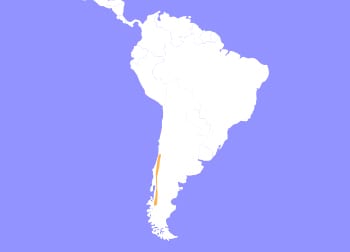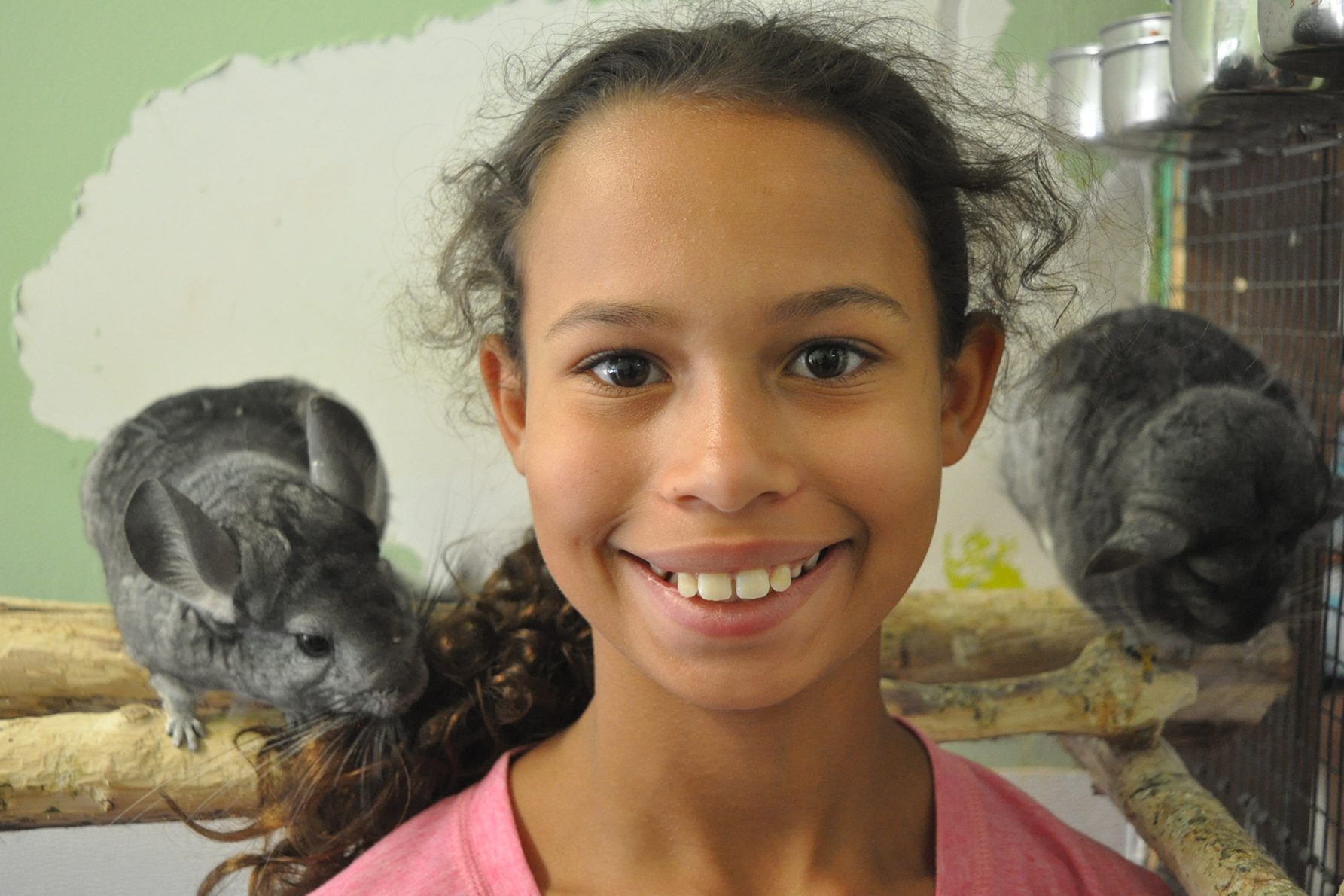Chinchilla
Chinchilla lanigera
This breed of chinchilla is also known as the long-tailed chinchilla, also called the Chilean coastal, common or lesser chinchilla. This is contrasted to their close relative the short-tailed chinchilla, which is an endangered species. Both species are considered endangered in the wild, after historically being hunted for their soft hair coats. They have an average body length of up to 10 in, with more rounded ears. Through selective breeding and domestication, the original yellowish-grey coat of the chinchilla, has become more dominated by colors like beige, white, ebony, sapphire, violet, charcoal, and velvet. The soft hairs covering their bodies are 1 in long. It is extremely silky and soft, and firmly adhered to the skin. Chinchillas will have up to 75 hairs grow from a single hair follicle, which helps give is such a soft plush feel. In the wild, Chinchillas live in burrows and rock crevices in the Andes of Northern Chile, at elevations between 3,000 to 5,000 m. They live in rather harsh climates and have had to adapt to temperatures ranging 50 - 70 degrees fahrenheit.
Since domestication, three breeds have emerged and are commonly recognized: la plata, costina, and raton. La plata has a more developed musculature and heavier bone structure, looking more roundish and compact than others. Costina has a less developed musculature and bone structure, with its most distinctive feature being its longer hind legs. Raton has similarities of the la plata species, but has a more pointed nose. They are known to breed seasonally between October and December.

Chinchillas are native to South America, ranging from Chile to Peru.
HABITAT -They live in burrows and rock crevices in the Andes of Northern Chile.
DIET -In the wild they’ll eat plant leaves, fruits, seeds, and small insects.
FUN FACT -When caught by a predator, chinchillas will release part of its fur to free themselves from the predator.
SOCIAL BEHAVIOR -They live in social groups resembling colonies, properly called herds.
ACTIVITY -They are crepuscular, meaning they’re mostly active in the late afternoon / early evening.
PREDATORS -Predators in the wild include: birds of prey, skunks, felines, snakes, and canines.
SIZE -On average they are about 10in long, weighing about 1 lb.
RELATIVES -There are five species of chinchilla form the Chinchilla genus, 3 domesticated and 2 wild.
CONSERVATION -Chinchillas are considered Endangered on the IUCN Red List.
Cub Creek Animal Care Information
Housing - Our Chinchillas inhabit multiple parts of our animal area, with some living in single critter enclosures, and larger colonies living in specialized habitat enclosure rooms. All of them provide a fresh supply of water. We bed their enclosures with shavings helping to make cleanup really easy. Hides are included in their enclosures to simulate a terrain they are similar too, these hides are made from either plastic or clay, giving them a nice cool dark place to rest during the day.
Diet - We feed our Chinchillas a well balanced diet that provides all of the nutrition they need! This diet consists of vegetable chunks and leaves (usually lettuce), 4 cups of small animal pellets, and timothy hay. They also get special treats at times like salt blocks, they love to lick! Nuts, seeds, and dried fruit are also given to them sparingly as special treats.
Enrichment - Our chinchillas get plenty of socialization with humans, time is spent making sure they are acclimated to new people and spending time with campers during the summer! Our chinchillas get dust baths regularly each week, this helps their skin to absorb oils and dirt from their fur to keep them clean and healthy! They LOVE their dust baths, seeing them roll around with glee is so enjoyable. They also love their salt licks, and getting made special treats of fruits and vegetables made by our campers.


